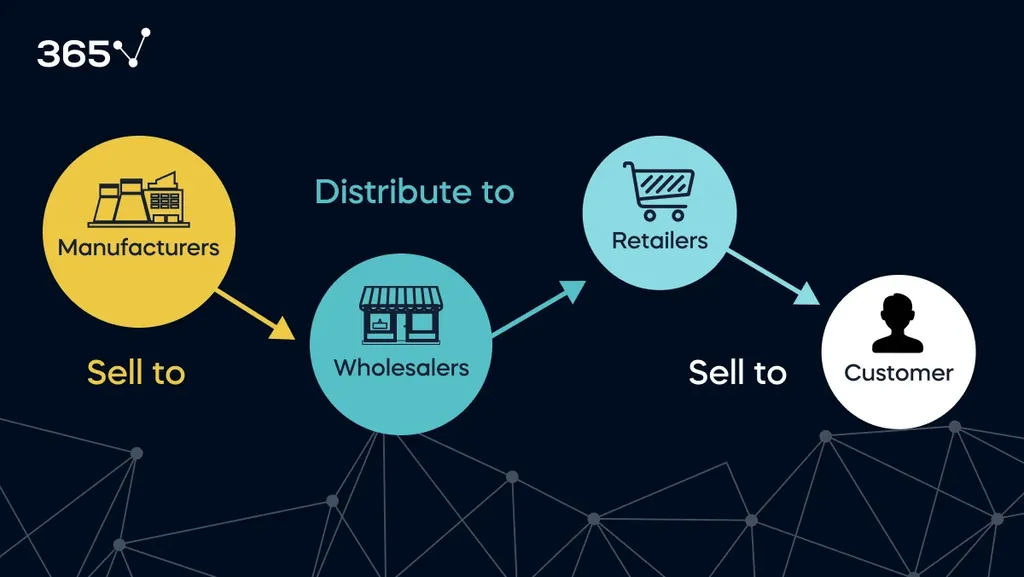Data science has become an integral part of success in nearly every industry. It is a multidisciplinary field, which requires not only good coding skills and an analytical mindset, but domain expertise too.
This means that a good data scientist must have a firm grasp of the basic terminology and the latest trends in the respective field.
In this article, we discuss what retail is and how it fits into the supply chain cycle. Next, we also explore the data types you might encounter and some common applications of data science in retail companies. Finally, we cover the key prerequisites to land a job as a data scientist in this field.
How to Become a Data Scientist in Retail: Table of Contents
- Introduction to the Retail Industry
- Types of Data in Retail
- Applications of Data Science in Retail
- What Is the Role of a Data Scientist in Retail?
- The Required Skills to Become a Data Scientist in Retail
- How to Become a Data Scientist in Retail: Next Steps
Introduction to the Retail Industry
Before we go into detail about the advantages of data science for retail, let’s see how this sector fits into the supply chain cycle.
Retailing is the act of selling goods or services to the consumer. The process starts with manufacturers who create different products from raw materials with the help of machines and workers.
Next come the wholesalers. They buy large amounts of goods from manufacturers and distribute them to retailers who, in turn, sell these to the end user.
Let’s track the journey of a can of coke.
So, you (the consumer) go to the store (the retailer) to buy a refreshing drink. The can of coke you pick was delivered in a box with a batch of other cans by the wholesaler. They bought it from the coke factory (the manufacturer), who produced and boxed the product.
And that’s the link between retail and other industries comprising the supply chain cycle. Now, let’s look at the division within the sector.

There are different types of retail businesses and many ways to group them. For the purposes of this article, let’s consider the four main categories:
- Food and drinks
- Soft goods like clothes, bags, shoes, mats, and so on
- Art, including painting, sculpturing, music, and all fine art products
- Hardlines, such as furniture, appliances, and electronics

As you can see, this industry offers diverse opportunities. Before we cover the skills you need to obtain a data science job in retail, let’s discuss the different data types you might encounter in your practice.
Types of Data in Retail
Part of your job as a data scientist in retail will be to apply your analytical skills to help solve business problems. You’ll often work with big data to identify hidden trends and patterns and drive business growth.
Let’s discuss the three main types of data you’ll deal with daily.
Customer Data
This encompasses everything related to the end users—from demographics, such as age, gender, and income, to purchasing behavior, such as time and frequency of buying certain products. This type of big data is key in retail, as it helps understand customers’ preferences and behavior and tailor the service to them.
Sales Data
Gathering information related to the sales processes is crucial for optimizing them. Sales data helps you answer questions like:
- Which product categories have the highest number of sales?
- Which product has the lowest number of sales?
- Which store sold the most items in category X?
Sometimes, there may be an overlap with customer data, and you can use information from that database to generate more insights.
Operations Data
Operational data includes any type of information about the organizational processes and functions. For example, this can be employee performance over time.
Monitoring and analyzing operational data can significantly improve data-driven decision-making. This is a crucial role of data science not only in retail, but in any business and sector. For those of you who look for some hands-on, practical experience told by a field expert, you could watch our course Fashion Analytics with Tableau where you'll find how data science changes the retail fashion world and its operations for the better.
Applications of Data Science in Retail
Based on the data types discussed above, we can identify some of the key functions of data science in retail—making data-driven decisions, reducing operational costs, and increasing sales. However, the list doesn’t end here. Microsoft's e-book on data-driven retail provides a comprehensive overview of the topic.
Below, we give a few examples of the use cases of data science and analytics in retail.
Fraud Detection
Data scientists use Deep Neural Networks (DNNs) to detect fraudulent transactions.
Personalized Marketing
By analyzing online customer data, such as purchasing behavior and preferences, data scientists can draw useful insights that help design targeted marketing campaigns.
Recommendation System
Using collaborative and content-based recommendation systems, retail companies can predict customer preferences and generate relevant product suggestions.
Customer Sentiment Analysis
Using natural language processing to analyze user feedback from different sources, retail businesses can understand their customers’ preferences and needs.
What Is the Role of a Data Scientist in Retail?
Having an analytical mindset and the right technical skills will enable you to experiment with data and draw insights that can optimize business processes.
We’ll take the guesswork out and describe the tasks you may need to complete on the job. The examples below are from a recent job post for a data scientist in retail analytics:
- Develop insights about products using advanced statistics and machine learning methods.
- Use Hive, Python, and SQL to write, validate, and maintain code to support research and data analyses.
- Diagnose issues and areas of improvement regarding QC, efficiency, and accuracy of data preparation.
- Build and convey impactful insights using multiple data sources and modelling.
- Work with large datasets of respondent level, log file, or transactional level.
Of course, these tasks are not standard for every position, but we chose the most common ones you’ll likely see in any data science job in the retail industry.
Now, let’s see what skills you need to obtain one.
The Required Skills to Become a Data Scientist in Retail
To work as a data scientist in retail, you need domain knowledge and technical skills. That’s valid for data science experts in any industry.
Let’s examine the specific skills and knowledge you must obtain to succeed in the retail sector.
Domain Knowledge
The more domain-specific information you have, the better you’ll be at solving complex problems and this is the essence of working with big data in retail.
So, roll up your sleeves and learn the basics of sales, marketing, and business. Attend webinars, take online courses, and read books and articles on these topics.
Next, you can take our course Customer Analytics in Python. It covers the theory and skills necessary to work with customer data to achieve sales, marketing, and business goals.
Programming Language
Good command of Python is a key prerequisite for working as a data scientist in any field, and retail is no exception. And since you’ll be dealing with huge amounts of data, you must be able to work with SQL.
That said, some companies require Hive instead of SQL. Being familiar with both will give you a competitive advantage when applying for data jobs in retail.
Statistics
While you don’t need to be a master in statistics, you must understand the basic principles relevant to data science processes. We recommend starting with our introductory Statistics course.
You can complement your online learning with some readings. Our blog contains useful resources and guides on some key topics, including:
Descriptive Statistics
As the name implies, this branch of statistics is used to describe the key characteristics of data. It includes, among other things, the calculation of the mean, mode, and median.
Inferential Statistics
The second branch of statistics involves analyzing random samples to draw conclusions about a population. The main topics you need to understand are hypothesis testing and regression analysis.
Variability
Variability includes parameters like range, standard deviation, and variance.
Correlation
Correlation is a simple but key method for measuring the relationship between two variables. There are two types of correlation:
- Positive, where, as one variable increases, the other increases as well; i.e., they move in the same direction.
- Negative, where, as one variable increases, the other decreases; i.e., they move in opposite directions.
Machine Learning
There are multiple applications of machine learning in retail. One of the most common ones is fraud detection, and more concretely, the use of Deep Neural Networks to spot and prevent fraudulent activity.
Mastering this complex skill is no easy task, but it’s essential.
Start with a general introduction to the topic, practice building models, and study the benefits of machine learning for retail.
Our Machine Learning in Python course provides a solid foundation. It covers the theoretical and practical aspects of predictive modelling using Python.
Other Skills
Knowing how to code and build predictive models is important, but it’s not the key to becoming a successful data scientist. You need a unique blend of soft skills that complement your technical knowledge.
This includes communication skills, storytelling, critical thinking, and data visualization. After all, none of your work matters if you can’t communicate your findings in a straightforward way to the stakeholders.
How to Become a Data Scientist in Retail: Next Steps
Building a data science career in retail is easier when you know where to start.
From beginner-friendly introductions to Python and R to advanced specialization in machine learning, the 365 Data Scientist Career Track has everything you need to break into the field.
Under the guidance of leading industry experts, you will learn by doing with a myriad of practical exercises and real-world business cases. If you want to see how the training works, start with a selection of free lessons by signing up for free below.











